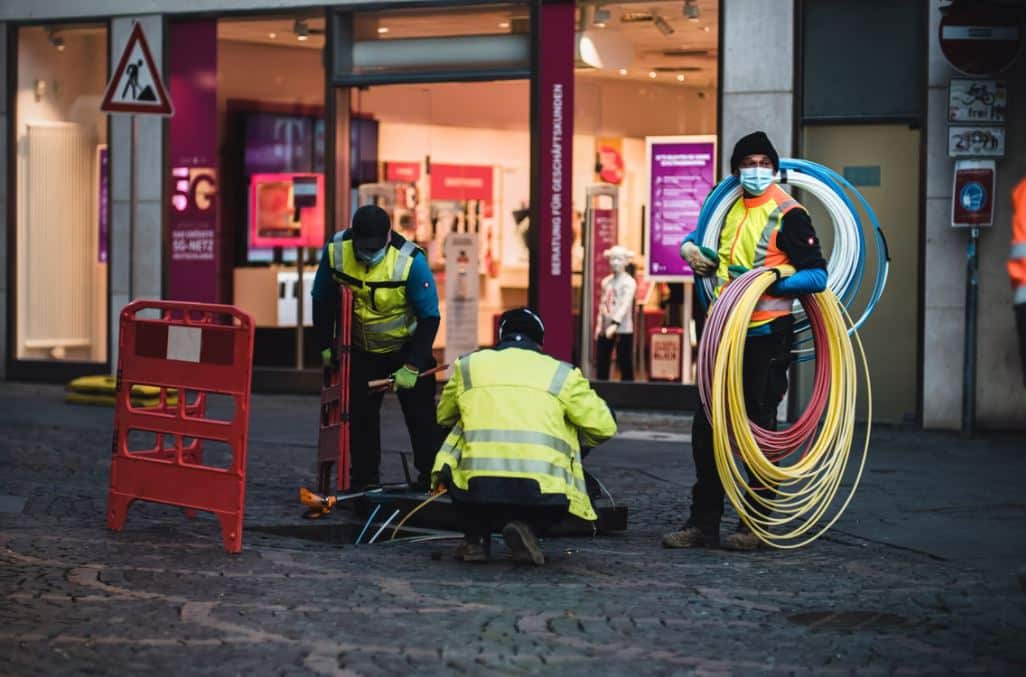Entrance Ramps on the Information Superhighway
COMMENTARY

Let’s be honest, information infrastructure isn’t sexy. It doesn’t go viral or grab headlines and it doesn’t dominate the talking points on the 24-hour news shows. But it matters.
That’s why you may have heard me cheering last year when Congress passed President Biden’s Infrastructure Investment and Jobs Act that, among other things, invested $65 billion in federal funding to provide high-speed internet to millions of families across America and build countless entrance ramps onto the information superhighway.
Well, I cheered even louder last week when, standing in the White House Rose Garden, Biden announced a new partnership with 20 national internet providers like AT&T, Comcast and Verizon to drastically reduce broadband costs for low-income families and provide high-speed internet for no more than $30 per month.
In other words, combined with the Infrastructure Investment and Jobs Act’s monthly $30 direct benefit, families living at or below 200% of poverty will receive high-speed internet for free.
Let me repeat that…for free!
That’s not just a big deal. It’s, as Biden said, “a bfd.”
The fact is that, particularly in rural communities, reliable and affordable broadband access has been a struggle for years holding our schools, our businesses and our families back while others surged forward at the speed of information. This has become even more apparent since the pandemic began as public wifi networks at restaurants and municipal buildings became a lifeline for teachers and students who had no reliable broadband access at home.
But even as life slowly gets back to normal, the internet is more critical than ever, especially as millions of students still lack suitable internet access at home.
This partnership begins to make that right recognizing that broadband isn’t just a luxury anymore, it’s a necessity. That’s why former Vice-President Al Gore used to refer to the internet as the “Information Superhighway,” because he knew even then that digital infrastructure would be as important as roads and bridges … and failing to invest in that infrastructure would be devastating.
The facts are simple:
- Lower broadband speeds tend to translate into higher unemployment.
- Lack of high-speed broadband is a major barrier to educating our children.
- Nearly half of students who relied on cellphones for high-speed access fall behind on homework compared to only 17% with reliable high-speed access at home.
- Broadband access is critical to small business success.
- Internet connectivity even impacts what we think of as “low-tech” industries like farming.
In other words, if we want to compete in the 21st Century, we must make the information superhighway not just accessible, but affordable for EVERYONE.
This new partnership does just that and removes a major barrier to success for an entire generation of Americans.
Reliable broadband access is becoming affordable for all. So, forgive me if I get a little loud, but I’m excited. I’m excited to see that we can still move forward even when the naysayers drag their feet. I’m excited to see that issues that move the needle for working families get the push they need even when they don’t grab headlines. I’m excited to see our president making our families a real priority.
I’m excited for the future. As Majority Whip Jim Clyburn often says, access to reliable affordable broadband in the 21st century is what access to electricity was in the 20th century. It’s a must have.
Antjuan Seawright is a Democratic political strategist, founder and CEO of Blueprint Strategy LLC, and a CBS News political contributor. Follow him on Twitter @antjuansea























